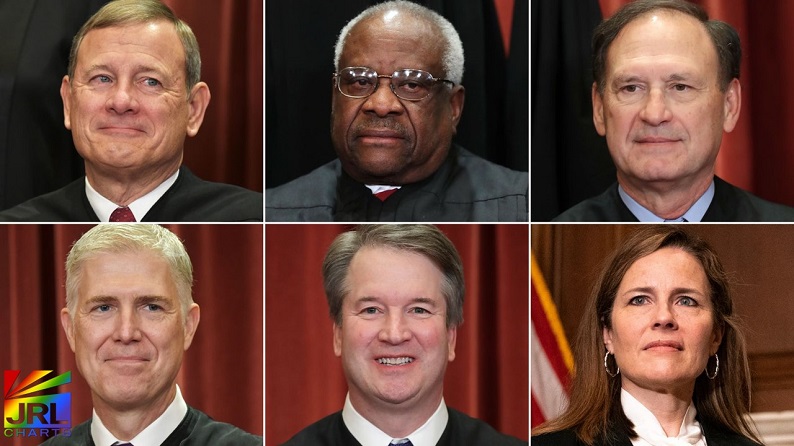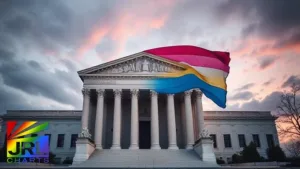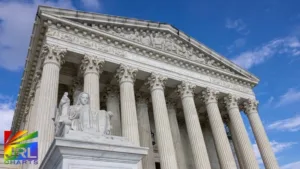By: Paul Goldberg, Senior Editor | JRL CHARTS – LGBT Politics USA
WASHINGTON D.C. — (June 27, 2025) — In a stunning decision with sweeping constitutional ramifications, the conservative-majority U.S. Supreme Court delivered a major legal victory to President Donald Trump, dramatically curbing the authority of federal judges to block executive actions.
Related Links on JRL CHARTS:
-
Supreme Court Allows Trump to Implement Transgender Military Ban
-
Trump Admin Snubs Pride Month, Rebrands June as ‘Title IX Month’
- LGBT Politics USA News & Updates
The 6-3 ruling marks a pivotal moment in the Trump administration’s consolidation of presidential power—effectively removing one of the last judicial guardrails on unilateral executive orders.
The ruling stems from Trump’s controversial attempt to terminate birthright citizenship, one of his administration’s most aggressive moves targeting immigrant communities. While the Court did not immediately rule on the constitutionality of that executive order, it took aim at a more structural issue: whether a single federal judge has the authority to issue a nationwide injunction.
U.S. Supreme Court Rules “Trump Is King”
According to the majority opinion authored by Justice Amy Coney Barrett, district courts overstep their legal boundaries when they universally block presidential actions during ongoing legal challenges.
“Federal courts do not exercise general oversight of the Executive Branch; they resolve cases and controversies consistent with the authority Congress has given them,” wrote Barrett.
“When a court concludes that the Executive Branch has acted unlawfully, the answer is not for the court to exceed its power, too.”
Barrett’s opinion was joined by all five other conservative justices, forming a supermajority. The Court’s three liberal justices issued a sharp dissent, warning that the decision strips the judiciary of its constitutional role as a check on executive overreach.
The justices did not reach a final verdict on Trump’s executive order to end automatic citizenship for children born on U.S. soil, a move widely condemned by immigration and human rights advocates. Instead, the ruling focused on limiting judicial tools that have historically been used to pause executive actions deemed potentially unconstitutional.
This landmark decision significantly alters the balance of power between the branches of government—effectively giving the sitting president, currently Trump, greater freedom to enforce orders without immediate legal challenge from lower courts.
Legal experts warn that the ruling may undermine future attempts to block executive actions impacting marginalized communities, including LGBTQ+ Americans, immigrants, and reproductive rights groups. The White House, meanwhile, praised the decision as a long-overdue rebalancing of power.
With this ruling, the Supreme Court has shifted more weight toward presidential authority—reigniting debate over the erosion of democratic checks and balances in the modern era.
Stay with JRL CHARTS for breaking developments on the Supreme Court’s power shift and its impact on LGBTQ+ civil rights under Trump’s rule.
- Top 7 Most-Read Stories of the Week on JRL CHARTS - December 21, 2025
- ‘The Six Billion Dollar Man’ (2025) Official Trailer Exposes the High-Stakes Battle Over Julian Assange - December 21, 2025
- NS Novelties’ Renegade Inflata Play Is a Standout Gift for Advanced Anal Play - December 21, 2025
Affiliate Disclosure: JRL CHARTS is a digital news and media platform. We do not host, stream, or sell adult content. Some outbound links may contain affiliate tracking to licensed studio-owned platforms (e.g., LatinBoyz, AEBN, BiLatin Men). These links lead to legal, age-gated distributors and are provided strictly for editorial and informational purposes only.








